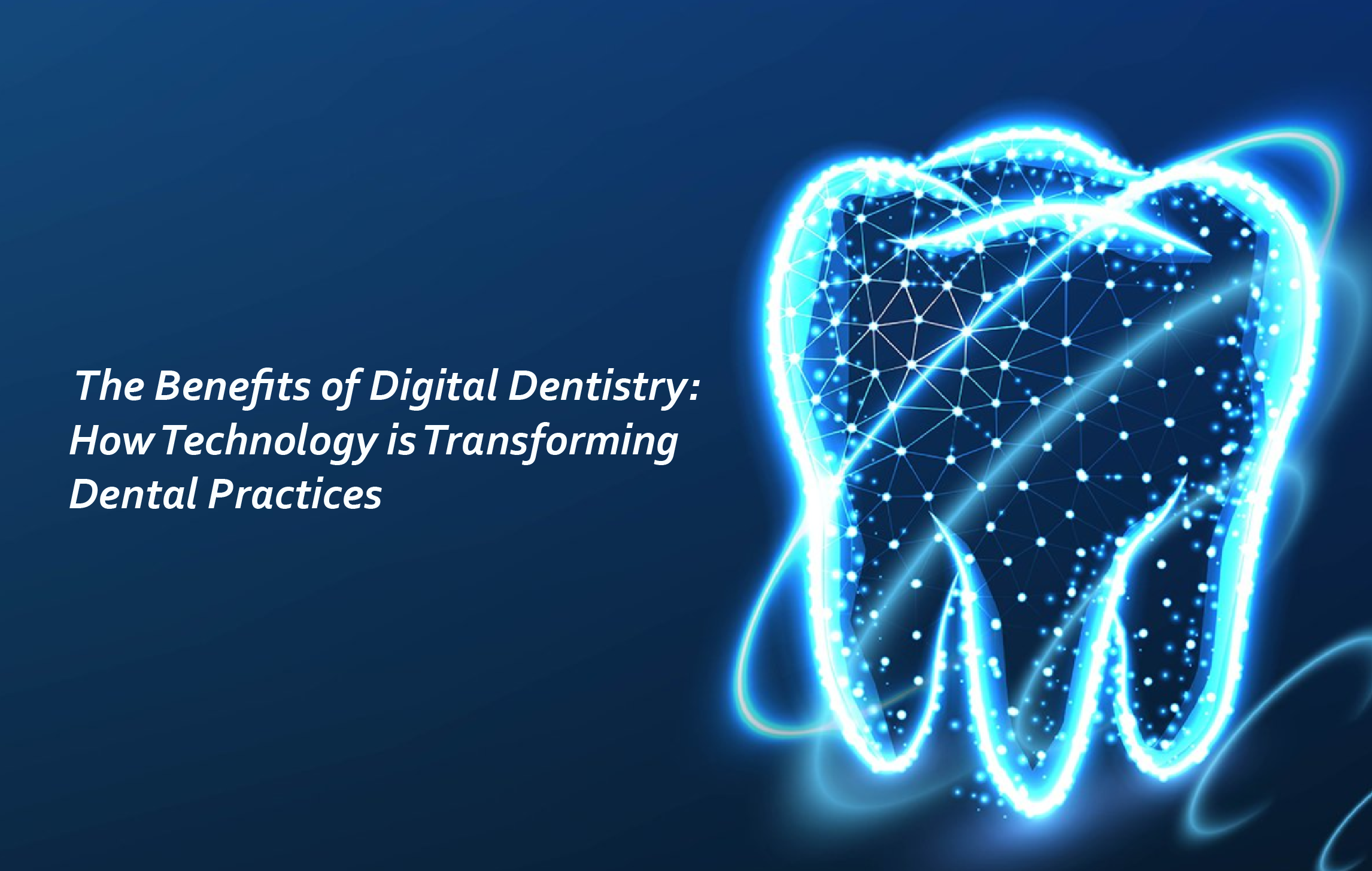 In the past couple of decades, digital technology has infiltrated every aspect of our lives, from the way we communicate and work to how we shop, learn, and seek medical care. One field where the impact of digital technology has been particularly transformative is dentistry. Modern dental practices are beginning to look more like high-tech labs, with sophisticated digital tools and software programs replacing traditional methods, leading to what is now commonly referred to as digital dentistry.
In the past couple of decades, digital technology has infiltrated every aspect of our lives, from the way we communicate and work to how we shop, learn, and seek medical care. One field where the impact of digital technology has been particularly transformative is dentistry. Modern dental practices are beginning to look more like high-tech labs, with sophisticated digital tools and software programs replacing traditional methods, leading to what is now commonly referred to as digital dentistry.
Digital dentistry is the application of digital or computer-controlled components to carry out dental procedures rather than using mechanical or electrical tools. It encompasses a wide array of tools and techniques, including digital imaging, CAD/CAM (Computer-Aided Design/Computer-Aided Manufacturing), 3D printing, and digital record keeping. In this blog post, we will explore the key benefits of digital dentistry and how it is transforming dental practices.
Improved Diagnostics & Treatment Planning
One major benefit of digital dentistry is the use of advanced diagnostics technology like intraoral scanners and digital X-rays. Intraoral scanners create 3D images of the inside of the mouth by using optical scanning technology. This allows dentists to get highly accurate impressions that are used for procedures like crowns, bridges, implants, braces, and more. Digital X-rays emit significantly less radiation than traditional film X-rays, while providing higher-resolution images that are easier to store and share. Together, these digital diagnostics remove guesswork and provide dental professionals with comprehensive information to make informed decisions about dental treatment plans.
Enhanced Precision and Efficiency
The use of CAD/CAM technology and 3D printing has brought about a level of precision and efficiency that was previously unattainable. Dentists can now design and create dental restorations such as crowns, bridges, and implants with perfect fit and aesthetics, often in a single visit. This not only reduces the time a patient spends in the dental chair but also improves the overall quality of restorations.
Overcoming Dental Anxiety
Dental anxiety is a common barrier that prevents many individuals from seeking necessary dental care. Digital dentistry offers innovative solutions to alleviate dental anxiety and create a more comfortable experience. Intraoral scanners eliminate the need for traditional impression materials, reducing discomfort and minimizing anxiety-inducing triggers. Virtual reality (VR) technology is also being integrated into dental practices, providing patients with immersive and engaging experiences that distract from dental procedures, easing anxiety and enhancing overall well-being.
Improved Patient Education
Visuals are powerful. With digital radiographs, intraoral photos, and 3D imaging, dentists can clearly show patients what's happening in their mouths. This improves understanding of dental conditions and treatment options. Patient education videos and visual aids can also be incorporated seamlessly into digital dental software platforms. This benefits patients who want to learn more about their oral health.
Streamlined Workflows
Transitioning from traditional impressions and analog models to digital scans and CAD/CAM fabrication provides huge workflow benefits for dental offices. Intraoral scanners are more comfortable for patients, faster for dentists, and eliminate the need to store and manage physical models. Labs can rapidly manufacture crowns, bridges, aligners, and more from digital files through CAM milling. This reduces wait times for patients.
Practice Management Benefits
Digital management systems help dental practices save time and maximize efficiency. Features like digital charting, integrated scheduling programs, and paperless record storage makes accessing and managing patient information faster for the whole dental team. Appointment reminders, billing, treatment plans, and communication can all be handled electronically.
Greater Accessibility
Another crucial benefit of digital dentistry is that it can make dental care more accessible. Teledentistry, or remote dentistry, allows dentists to consult, diagnose, and even oversee some treatments remotely. This is particularly beneficial for people in rural or underserved areas, who may not have easy access to dental care.
While requiring some investment upfront, integrating digital technology provides dental practices with many advantages. Cutting-edge digital diagnostic tools, enhanced patient education capability, increased treatment precision, and improved practice efficiency are just some of the key benefits. As digital innovation continues, dentistry will become even more effective at delivering optimal oral healthcare and patient experiences. The digitization of dentistry is both inevitable and positive for the future of dental practices.
Ready to experience digital scanning technology? Contact us for more details.
Post time: Aug-10-2023





